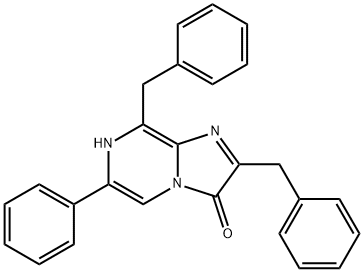Coelenterazine is a luciferin, a light-emitting biomolecule that serves as a substrate for luciferases or as a constituent of photoproteins. The oxidation of coelenterazine to coelenteramide is accompanied by emission of blue light (emission maximum = 460-470 nm). Luciferase-mediated oxidation of coelenterazine or a derivative is used as an energy donor, typically to a form of green fluorescent protein (GFP), in bioluminescent resonance energy transfer (BRET) studies. Coelenterazine 400a is a bisdeoxy derivative of coelenterazine that produces an emission peak near 400 nm following conversion by Renilla luciferase (Rluc). It is used in BRET2 protocols, whereas coelenterazine h, which has a 475 nm Rluc emission peak, is used in BRET1 protocols. The emission peak of coelenterazine 400a is commonly paired with class 1 and 3 GFPs, including GFP2 and GFP10. BRET2 assays are commonly used in evaluating protein-protein interactions, including those involved in G protein-coupled receptor signaling.

